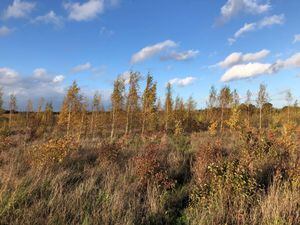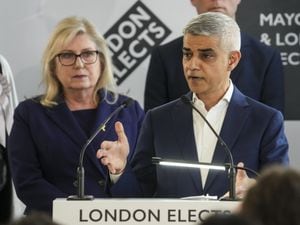RSPB in plea to ensure new woodlands are ‘right trees in right places’
Tree-planting is being ramped up in efforts to tackle climate change.

New woodlands planted to tackle climate change should avoid carbon-rich soils where growing trees could backfire, the RSPB said.
Research analysing soil types across the UK by the wildlife charity reveals where woodland expansion could best go ahead in the future as part of efforts to massively ramp up tree planting to absorb carbon emissions.
The RSPB said it is important to get the right trees in the right place, with a focus on growing native broadleaf woodlands that also benefit wildlife on soils which do not already store significant carbon in the existing landscape.
Some soils are rich in carbon and planting trees on them could risk releasing more carbon from the ground than the trees absorb, at least in the first few decades, as well as harm important habitats, the conservation group said.
The RSPB warned this had happened in previous tree-planting surges, when non-native conifer plantations were put into deep peat landscapes, damaging the soil and releasing carbon.
The analysis found there is “just enough” lower-risk mineral soil in the UK to meet the most ambitious targets set out by the Government’s advisory Climate Change Committee to create almost two million hectares of new woodland by 2050.
New maps identify where significant woodland expansion might be feasible, avoiding important open non-woodland habitats, highly productive farmland, existing woodland, deep peat soils, and towns and cities.
Rare species such as curlew and whinchats should also be taken into account when looking at where to expand woodlands, and a mosaic of habitats including heathland, meadows and peat bogs is needed to boost nature, the charity said.
The study also found that over the long-term, native broadleaf trees absorb and hold more carbon and benefit more wildlife than some fast-growing conifer species such as Sitka spruce.
Tom Lancaster, the RSPB’s head of land policy, said: “Today just 13% of the UK is covered by woodland, and new woodlands could play a key role in tackling the climate and nature crises.
“For this to happen we need to ensure that we plant the right trees in the right places.
“This means looking at our native trees and woods so that we are expanding our broadleaf woodlands into areas of land that are not currently locking up carbon so that we can use our trees to absorb and store carbon long-term.”
The RSPB also warned that woodland expansion could only play a small part in cutting the UK’s emissions to zero overall, known as “net zero”, and tree planting should be a way of restoring nature as well as tackling the climate crisis.
A Government spokesperson said: “Tree planting is at the heart of our ambitious environmental programme, with the Prime Minister reiterating our commitment to plant 30,000 hectares per year by 2025 as part of his 10-point plan for the environment.
“All of our tree-planting schemes follow the UK Forestry Standard’s principle of planting the right tree in the right place – helping to ensure we deliver the array of benefits trees can provide including carbon capture and improved soil health.”





